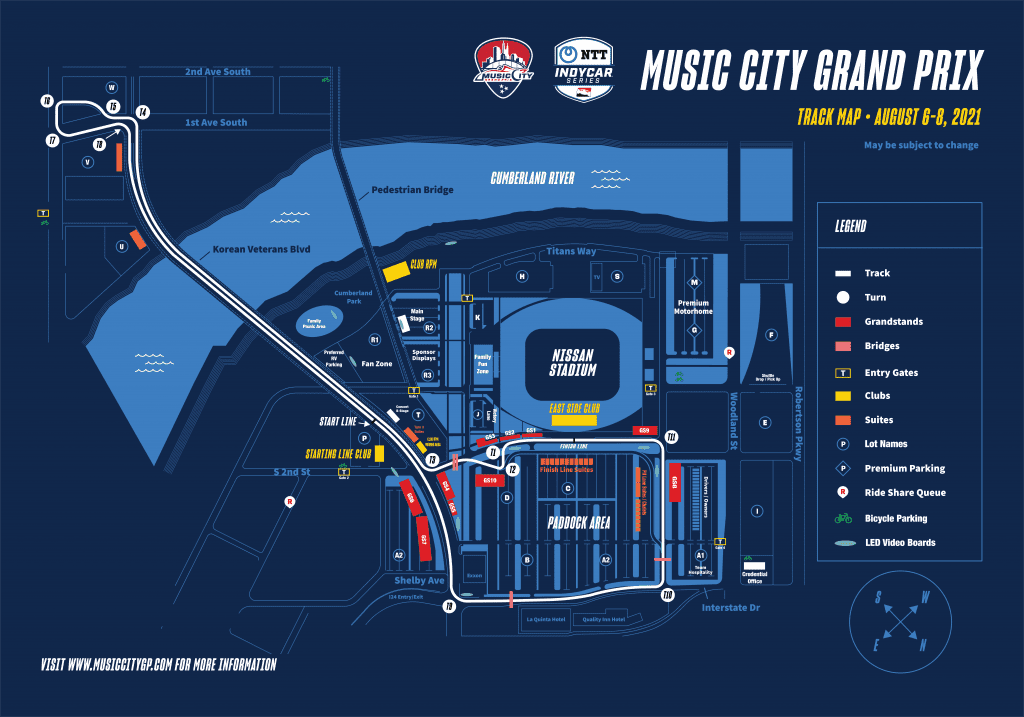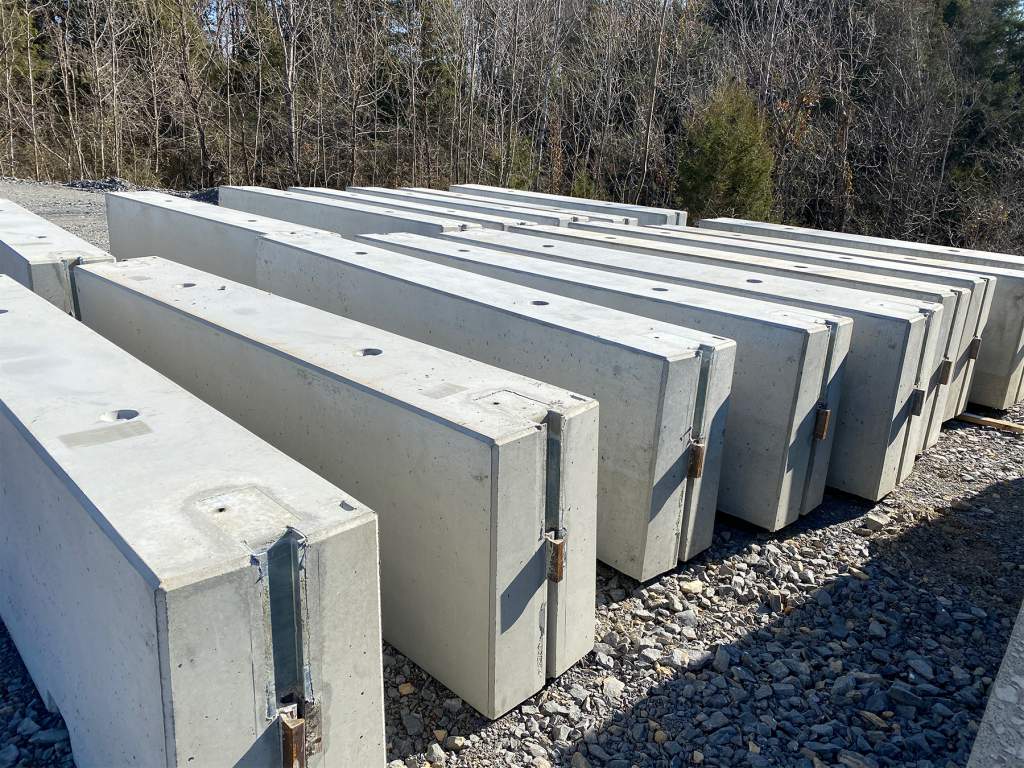until Abu Dhabi Autonomous Racing League

Street tracks are something that America is very good at, and it looks like IndyCar’s first new one since the Reliant Park version of Houston in 2013 is set to be a cracker.
A section on a huge, sprawling and aesthetically pleasing bridge and a link-up with the Tennessee Titans football team makes the Nashville Music City Grand Prix one of the biggest motorsport events to watch in 2021.
Indeed, hometown hero, double IndyCar champion and race ambassador Josef Newgarden reckons Nashville will be the number one race outside of the Indianapolis 500 this year.
Team Penske @IndyCar Series driver, 2017 and 2019 champion @josefnewgarden says #Nashville is going to be the #1 destination outside of the #Indy500 next year. #MusicCityGP pic.twitter.com/hJI6Jm00sf
— Music City Grand Prix (@MusicCityGP) September 16, 2020
With great cuisine, a world famous music scene, central location and a history of being able to pull off big events, the Music City Grand Prix – scheduled for August 8 – has so much going for it.
The Tennessee market is a big one for TV audiences, and that’s only increased recently with Newgarden’s success.
While its launch in September last year went down with huge fanfare from the promoters and IndyCar, it’s since had to face some exceedingly tough hurdles.
A global pandemic that isn’t abating, for one, and there was also a bombing in the city that took place on Christmas Day where the perpetrator was killed in the explosion.
Add to that the existing complications of the location – things like having to have divers in the water under the Korean Veterans Memorial Bridge – and the already huge logistics needed to launch and run any street race and you start to see what a phenomenal task faces one of the few new motorsport events aiming to using 2021 as its first year.
However, this week the first of 2142 12-foot concrete blocks that will be needed for the event was cast, and the organisers are ploughing on undeterred in the face of the circumstances they face.
The Music City GP should be confident, there’s a magnificent team behind the scenes. While none have faced running a race in a pandemic, people like the event’s chief operating officer Jason Rittenberry have seen just about everything else.
At the age of 25 he was president of Memphis Motorsport Park and he’s graduated through hosting Friday night short oval racing through to NHRA drag racing, NASCAR and Formula 1 in his role as chief strategy officer at Austin’s Circuit of the Americas.

Through affiliation he was also part of the group responsible for the Nashville Superspeedway which held IndyCar races from 2001-2008, and he later helped bring the series to Austin.
But even with people boasting the experience and love for motorsport of Rittenberry, there’s a staggering number of challenges ahead for an event that has been rumoured, dreamt of and anticipated in various forms over many years before finally coming to fruition.
“We still have confidence in 60,000 fans for race day” :: Jason Rittenberry
The current plans began to take shape around 2016 and were the idea of Matt Crews, now CEO of the project.
A massive deal to hold the race around the grounds of the Titans National Football League team’s Nissan Stadium gave the event a geographical and marketing anchor to build off.
And while pictures emerging on the internet in 2017 suggested the track layout would leave a little to be desired, the actual new circuit including the bridge was a mic-drop of a reveal last year.

A long run over the bridge fording the Cumberland River should allow cars to reach over 180mph on the run to Turn 4, which will be wide enough for multiple cars to run side by side.
Turn 4 will actually be the first turn on the opening lap, with the race’s start line just before the bridge whereas the finish line is in front of all the boxes at the Nissan Stadium.
Twisty Turns 5-8 bring the cars back onto the bridge, and from there it’s three 90 degree corners to head for the finish line.

The set-up itself is beginning now, which is one of the reasons this event faces more adversity than most. Yes, if a permanent venue event has to cancel a week before its date, it will lose money. Yes, if a street circuit has to cancel a week before it will lose more money.
But Nashville would lose the most due to the fact that it is building everything from scratch, it doesn’t have all the equipment in place that it can just roll out.
It leaves a lot of work to do behind the scenes, in a battle where your enemy isn’t visible. The virus is doing its work in the shadows and that makes event planning obviously very difficult.
Even at the launch of the event last year, Rittenberry told The Race the group had “never second-guessed ourselves” over proceeding in the pandemic. A delay to general ticket sales has left a shorter lead time to sell, but the corporate and hospitality sales are “better than expected”.
He adds: “I think that’s an indication of how the regular tickets will sell when we do put those on sale.
“We still have confidence in 60,000 fans for race day. The sales cycle is just going to be a little shorter than we originally planned but from an operational standpoint we are right on track to where we expected to be.”
The major part of that operational plan is the three phase introduction of the physical aspects of getting the track ready.
- Phase one: Preparing the surface of the stadium’s car park which will house the paddock for the teams
- Phase two :Working on the street surface to get it smooth enough for IndyCar and the GT and Trans-Am support events
- Phase three: Installing over five miles of concrete blocks as part of the final circuit set-up. This is to be done in 16 days, with nine days after the race to remove everything again
Here’s where you get a real flavour of the task at hand amid the pandemic. Nashville has and will continue to use a large part of its budget to initiate these phases of track creation, without knowing if the return it needs from ticket sales will be there.
“We have several budgets, several financial models built,” Rittenberry explains. “We have one with 70%, one with 50%, one with 20% [attendance].
🏁 Flashback Friday to our official announcement 4 months ago! 🏁
🔵Who is coming to Nashville?
🔴Comment below and tell us what you are most excited to see race weekend! #musiccitygp #indycar #gtamerica #nashville #motorsports #motorsportphotography #visitnashville #indycar pic.twitter.com/7mVkZkzPBj
— Music City Grand Prix (@MusicCityGP) January 15, 2021
“At zero fans, I’m not sure it would make sense for us to move forward. We would have to take a really hard look at that with zero fans.
“It’ll make it very difficult for a first year street race in a metro market.
“Having to build the course, it’s different. If you’ve got a permanent facility that’s already built and you need to host an event with no fans, that’s financially doable.
“But to build, the capital investment that it takes, we will have most of that already done by the time we know the answer to that [number of fans allowed] if something were to happen and change.

“Our first concrete blocks for the course were built this week. We have about 15 now, they’re on pace to do 15 a day, six days a week from now until July to get all the blocks built. So it’s a lot of block, it’s a huge capital and investment. We’re going to have all that invested before we even know if we can have 100, 50, 70% of fans .
“We do have the financial models built and we are moving forward with the event and we’re moving forward right now as if we will be in a different place by August, and we’ll be able to host fans and make this an incredible event.”
One incident that shouldn’t affect the event is the Christmas Day bombing in Nashville.
Thoughts and prayers for Nashville. We are completely devastated by the horrific explosion downtown this morning. Thankful for the first responders on the scene this Christmas morning. #prayfornashville pic.twitter.com/P8XXvGgfsF
— Music City Grand Prix (@MusicCityGP) December 25, 2020
It didn’t take part in the vicinity of where the circuit will be and Rittenberry tells The Race that discussions are ongoing whereby if increased security is needed – even more than what was already planned given the race’s public location in the 23rd most populous US city – the organising team will of course oblige.
The event has praised the bravery of the first responders on Christmas Day who had to run up and down flights of stairs to evacuate people from city lofts, flats and buildings to keep them safe.
“We absolutely want to honour those first responders and the firefighters that saved countless number of lives that morning,” adds Rittenberry.
Safety has been one of the priorities of this event, and the bridge added another focus.
“We did put up a very comprehensive safety plan together complete with the National Fire Department having rescue divers in the waters under the bridge,” Rittenberry told The Race in September.
“So we are prepared. Safety is a top priority for us as it is with IndyCar, with anyone planning a race and so we had to make sure that we had that all covered and all those safety plans will be implemented to reduce any any risk to the drivers or the fans here for this event.
“We feel like that bridge was a central to making the racecourse exciting.”
And exciting it certainly looks, as much as it can be before we’ve seen a car turn a wheel in action.
The dignity, positivity and determination this organising team has shown bodes well in relation to the hurdles it has faced and continues to do so.
Introducing Music City Grand Prix, an @IndyCar race unlike any other. From August 6-8, 2021, experience top musical acts, the most delicious cuisine Nashville has to offer, and the greatest drivers around. Sign up for updates at https://t.co/d1CpianUZP. #MusicCityGP pic.twitter.com/xCPg1BJAxK
— Music City Grand Prix (@MusicCityGP) September 16, 2020
However, coronavirus is something their greatest efforts can’t account for. Over 200,000 people have received a first dose of vaccine in Tennessee as of January according to The Tennesseean, but it’s so much more complicated than that when it’s a big event with people coming from all over North America to see it.
You get the feeling from discussing the ins and outs of the Music City Grand Prix that the team will be able to merely will this event into action.
It just has the core optimism – backed up with just enough realism – that if any team can do it it’s this one.
Now it’s time for the waiting game. Let’s hope coronavirus doesn’t ruin another big motorsport story.




